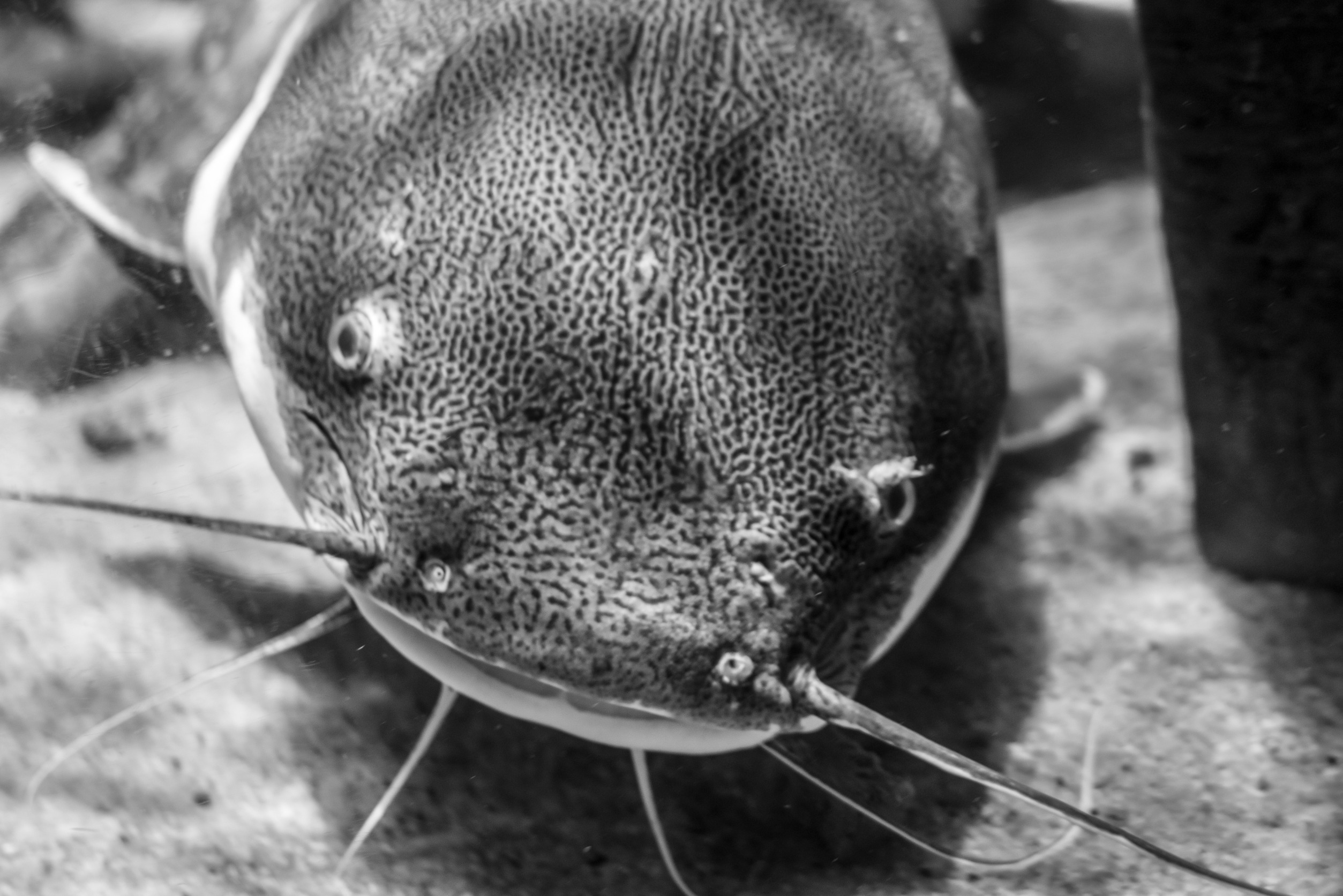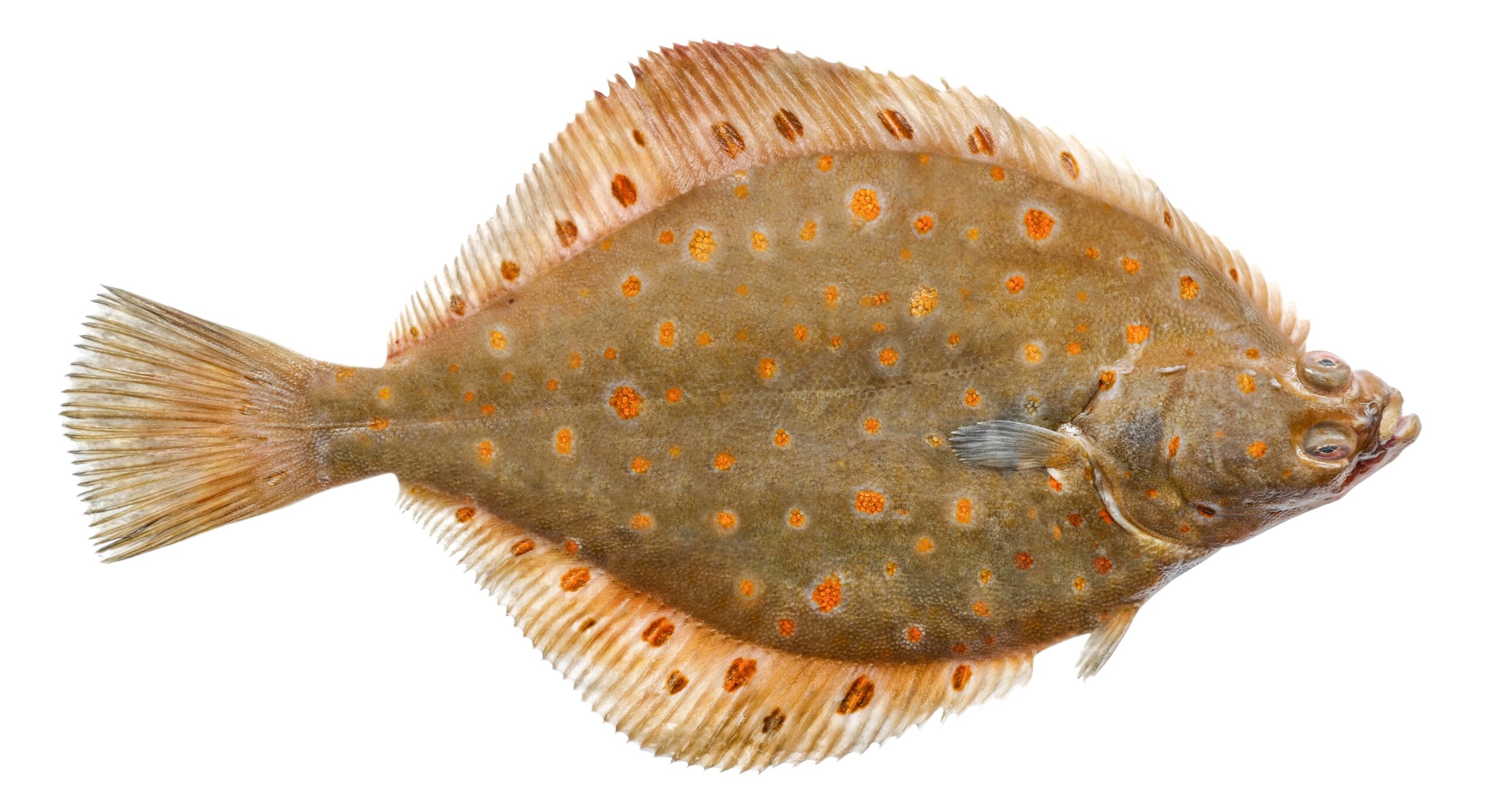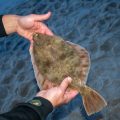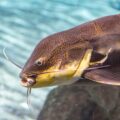Catfish and flounder differ in appearance, size, lifespan, distribution, taste, and many other factors. Though they are both bottom feeders with similar nutritional qualities, their differences far outweigh them. In this article, we will go in-depth on these differences.

Habitat and Distribution Differences Between Catfish and Flounder
Catfish are commonly found in freshwater environments such as rivers, lakes, ponds, and swamps. Some can also be found in brackish or saltwater conditions and inhabit estuaries and coastal areas. They have a much more widespread distribution compared to flounders.
In North America, catfish populations are significantly high in the Mississippi River basin, including Mississippi, Louisiana, and Arkansas. The Amazon River basin is most well-known in South America for its catfish populations. The Congo River in Africa and its tributaries hold a rich catfish community. They are also found in various locations across Asia, including the rivers of India, Thailand, and the Mekong River in Southeast Asia.
Flounder fish usually live in demersal habitats, meaning they live near the sea floor or water body. It’s rare to see them anywhere but at the bottom of the water, lying flat on the ocean floor. However, some flounder species prefer to stay near the shore, while others prefer to live along the continental shelf in deeper waters. They can be found in bays, estuaries, and even beaches.
These fish are distributed in various places worldwide but can be found the most in the Pacific and Atlantic oceans. The commercially important population of flounders is present along the Atlantic coast of North America, Europe’s shores, and the northern part of the Pacific Ocean.
Appearance Differences Between Catfish and Flounder
Catfish and flounders both have distinct outer features through which they can be identified. Catfish has a full body with whiskers on its face, while flounders are flat and don’t have whiskers. A detailed comparison is described below.
Body Shape and Characteristics
The body of a catfish is usually elongated like a tube and covered in smooth, scaleless skin. One of the most notable features of a catfish is its prominent whisker-like barbels, which are located around its mouth, which gives them the name “cat.” These barbels, known as “whiskers,” help them navigate and find food in murky waters. The number and length of barbels vary among different catfish species.
That aside, there are also other characteristics by which catfish can be identified. The shape and arrangement of their fin rays and the presence of spines are notable factors that can vary among species. The dorsal fin, located on the back of the fish, can range from tall and pointed to short and rounded. Some species have strong spines on their pectoral and dorsal fins for defense.
On the other hand, the bodies of flounders are known for being asymmetrical. It is laterally compressed and elongated, with both eyes on one side of the head. This body shape lets flounders lie flat on the ocean floor, camouflaging themselves and ambushing prey.
Flounders undergo a remarkable transformation called metamorphosis, a common characteristic seen among Arthropods. When baby flounders hatch from eggs, they have a symmetrical body shape and swim upright like any other fish. However, as they grow, one eye gradually migrates to the opposite side of the body, eventually resulting in their characteristic flat appearance.
Body Color
Regarding body color, catfish show a wide range of patterns and shades. Some species have a uniform coloration, while others show intricate patterns and markings. Typically, the color of a catfish’s body can vary from light yellow to dark brown or black.
Many catfish species have a mottled pattern with darker or lighter coloration patches, allowing them to blend into their surroundings. Some species may even have vibrant colors or iridescent scales during breeding seasons.
For example, the popular channel catfish typically has a bluish-gray body with scattered dark spots. On the other hand, the flathead catfish has a yellowish-brown body with a mottled appearance. The walking catfish is known for its eel-like body shape and dark coloration.
On the other hand, when it comes to coloration, flounders possess a unique ability to change their skin pigmentation to match their surroundings. Their coloration is usually mottled like some species of catfish and also varies depending on the species and the environment they inhabit.
The upper side of a flounder, which faces upward when lying on the seafloor, is often camouflaged to blend with the sand, gravel, or other substrates in its habitat. This coloration can range from sandy brown to gray, sometimes with some greenish hues, allowing them to blend in and avoid detection by predators or prey effectively.
During their metamorphosis, the coloration of these fish also changes. Juvenile flounders tend to have more vibrant and contrasting colors compared to adults. They often display bold patterns and markings, giving them better camouflage abilities in their early life stages. As they mature and adapt to their bottom-dwelling lifestyle, their coloration becomes more subdued and in tune with their surroundings.

Lifespan Differences Between Catfish and Flounder
The average lifespan of a fish can varies significantly depending on the species, environmental conditions, and whether they are in the wild or kept in captivity. Catfish have an extensive range of lifespans because there is a considerable difference among species. Flounders tend to have a much shorter average lifespan compared to catfish.
Lifespan in the Wild
In the wild, the lifespan of catfish can range from as less as 5 to as much as 70 years, depending on factors such as habitat quality, predation, availability of food, and natural lifespan variations among species. Smaller catfish species may have shorter lifespans, while larger species can live longer.
For example, the channel catfish can live for 15 to 20 years in the wild, while the flathead catfish have been known to live for up to 25 years or more. The Wels catfish can live up to 60 years. There are also records of catfish that have been alive for almost a century.
On the other hand, flounders, in general, have an average lifespan of only 10 years. Some flounder species, such as the winter flounder, typically live for about 10 to 12 years, while others, like the European flounder, can live up to 15 years or more. Most live up to less than 10 years.
Lifespan in Captivity
When catfish are kept in captivity, their lifespan can often be extended beyond average. Catfish can live slightly longer than their wild counterparts with proper care, diet, and suitable tank conditions. Some pet catfish species have been reported to live up to 30 years or more. But of course, it’s important to note that not all species of catfish thrive equally well in captivity, and their lifespans can still be influenced by various factors such as water quality, diet, tank size, and overall care. Flounders in captivity can live up to 15 years if kept under top-notch care or die in as little as 3 years if not. But on average, you can expect your flounder to live for 6-10 years when kept in captivity.
Size and Weight Differences Between Catfish and Flounder
While some species of catfish may only reach a few inches in length, others can grow to enormous sizes. For example, the Mekong giant catfish (Pangasianodon gigas), for instance, is one of the largest freshwater fish in the world, with individuals exceeding 9 feet in length and weighing several hundred pounds.
On the other hand, even the largest of flounders are comparatively much smaller than the largest of catfish. On average, a mature flounder may measure anywhere from 12 to 24 inches in length, which is 1 to 2 feet. The average weight of a flounder is usually between 1 to 5 pounds.
However, the larger species of flounder have been known to grow even more significantly, even reaching weights of 10 to 20 pounds or more. The largest flounder ever recorded is the Southern flounder (Paralichthys lethostigma). The holder of the world record among flounders, this unique fish weighed an impressive 20.87 pounds or 9.46 kilograms and measured approximately 25.5 inches in length.
Dietary Differences Between Catfish and Flounder
Both catfish and flounders are bottom feeders and opportunistic predators, so little difference is noted in their diets. However, there are differences in the range of their diets and the method of acquiring food.
Diet Comparison
Catfish are opportunistic feeders and have a varied diet in the wild. Their diet mainly consists of bottom-dwelling organisms, including insects, crustaceans, mollusks, small fish, plant matter, detritus, carrion, and sometimes, even smaller catfishes. The specific food sources may vary depending on the species of catfish and the available resources in their habitat.
Like most fish, catfish also change their feeding preferences as they grow. Juvenile catfish primarily feed on small invertebrates like insects and crustaceans. Their diet slowly expands as they grow, and they now contain larger prey like small fish and mollusks. Larger catfish have also been seen scavenging and consuming carrion, taking advantage of available food sources.
Unlike catfish, flounders are all predatory fish, and no species are herbivores. Their diet varies depending on the species, age, and size. For example, larval and juvenile flounders sometimes stay near the bottom. Instead, they float freely on the water and prey on tiny fish. From observations, it’s been noted that their diet primarily consists of zooplanktons, worms, small crustaceans, and fish larvae.
Feeding Habits Comparison
Catfish have sensory barbels, called “whiskers,” near their mouths. These barbels are highly sensitive to touch and taste, allowing catfish to locate food even in dark or murky waters. They use their barbels to detect vibrations and scents, helping them find prey hidden in the substrate or crevices.
Catfish are known for being voracious eaters and can consume various food items. Their adaptability and lack of choosiness allow them to thrive in multiple aquatic environments and take advantage of different food sources. Moreover, some catfish species are more herbivorous in nature and feed on plant matter like algae and phytoplankton, while others are more carnivorous, with a preference for live prey.
On the other hand, adult flounders are opportunistic predators. They use their camouflaging abilities to catch their prey off-guard before attacking them. Since they are moderately large, they can prey on smaller aquatic animals like fish, crabs, shrimp, and more. They are usually not picky and will eat whatever, as they could be more active when looking for food.
Nutrition Difference Between Catfish and Flounder
If we compare the nutritional values, catfish and flounder have similar protein content. Both fish will provide essential nutrients such as vitamin B12 and selenium, which play important roles in various bodily functions. Both contain low amounts of Omega-3 fatty acids, but some species of catfish may have higher levels than flounders.
Despite the similarities, catfish contain slightly higher amounts of calories and fat. Flounder has a higher vitamin D level than catfish. If you want to control your weight or deal with heart issues, you can pick flounder over catfish due to its lower fat content. Again, if you improve your bone health, you can also choose flounders over catfish.
The Taste Difference Between Catfish and Flounder
Catfish meat has a more pronounced flavor compared to that of flounder. You can enjoy a mild sweetness and slight earthy undertones in catfish meat. The texture of catfish is also more substantial and denser, which provides a moderate chewiness. That’s why catfish is often used in dishes where its slightly more robust flavor can complement bolder seasonings or sauces and create a memorable meal.
On the other hand, flounder has a way more delicate and tender texture, with an added softness and flakiness. Its flavor is mild and subtle, carrying a hint of sweetness and buttery quality. As a result, flounder is often favored for lighter preparations and seasonings, such as pan-searing, steaming, or poaching, where the delicate nature of the fish can shine.
In conclusion, there are many differences between flounder and catfish despite both being bottom feeders.











